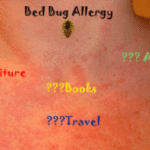The Mimosa, or Albizia julibrissin, is highly susceptible to pests such as cottony cushion scale, spider mites, and fall webworms. These bugs threaten the health of the tree and often prove fatal to neighboring Mimosas as well. Successful pest management involves a strategic selection of natural enemies of the specific pest harming the Mimosa. If necessary, the application of microbial or other forms of pesticides may be required to control the spread of infestation.
The Cottony Cushion Scale
The cottony cushion scale (Icerya purchasi) feeds on the sap it extracts from the Mimosa tree’s branches, twigs, and leaves. In addition, grimy mold can flourish when the scale secretes a sticky, sugary substance called honeydew, as it extracts sap from the Mimosa. Three times per year, the female secrets a sac that extends to dispatch up to about 800 eggs. This fact can make it difficult to wipe out larvae in a timely fashion.
According to the University of California Pest Management Guidelines, using one of more natural enemies of the cottony cushion scale are an effective control method. The vedalia beetle (Rodolia cardinalis) consumes scales regardless of which life-cycle stage the pests are in. The cottony cushion scale parasite (Cryptochaetum iceryae) has been successful in controlling scales along shorelines. The vedalia beetle and the cottony cushion scale parasite are both imported from Australia. Insecticides are not recommended as a form of controlling the cottony cushion scale because they can also destroy the pests’ natural enemies.
Spider mites draw sap from Mimosa leaves which result in bronze color foliage. The small eight-legged pests multiply quickly. The Purdue University Department of Entomology suggests how to test for spider mites. Take a white sheet of paper and hold it underneath a tree branch. Tap the branch forcefully. Spider mites will crawl off of the paper if the tree is infested.
Lacewing larvae, black lady beetles, and minute pirate bugs are natural enemies of the spider mite. The Purdue University Department of Entomology suggests that when it comes to selecting a pesticide or insecticide, a microbial like Bacillus thuringiensis or spinosad should be considered as opposed to more environmentally harmful options.
To counter the threat of spider mites, give the Mimosa enough water, fertilizer, and sunlight exposure. Spraying the plant twice weekly during high infestation seasons can also help wash away spider mites.
Fall Webworms
Fall webworms (Hyphantria cunea) form silken, web-like tents on the Mimosa. These caterpillars are either light brown or gray in color, and feature orange and black spots with long, white hairs that sprout out of them. Webworms feed on the foliage in between leaf veins.
The natural microbial insecticide, Bacillus thuringiensis kurstaki, is useful for destroying newly hatched webworm larvae. Caterpillars must eat the insecticide, so it is more effective if applied soon after larvae emerge.
A spinosad insecticide kills small larvae on contact as well as through ingestion. Its active ingredients are extracted through the breakdown of a naturally occurring organism. Multiple applications are usually required to kill separate groups of larvae as they hatch.
Vascular Wilt Disease
Vascular wilt disease is also referred to as Mimosa wilt. The disease is caused by a strain of the Fusarium root fungus which spreads by attaching to the roots of neighboring Mimosas. Vascular wilt has already killed trees along roadsides all across the nation, according to the University of Florida IFAS Extension. Because of this, the Mimosa is outlawed in some cities. It is on Oklahoma’s Problem Species list, and it is also named a problem tree by the U.S. Department of Agriculture Forest Service.
Threats of the Mimosa, such as cottony cushion scale, spider mites, and webworm may be more successfully controlled by incorporating the pest’s natural enemies. In some cases, pesticides and insecticides are recommended. However, if either one of these options are chosen, the risk of inadvertently harming the bugs that kill Mimosa’s foes must also be considered.
University of Florida: Albizia julibrissin ‘Alba’: ‘Alba’ Mimosa Tree
http://edis.ifas.ufl.edu/st069
University of California: Statewide Integrated Pest Management Program: Cottony Cushion Scale
http://www.ipm.ucdavis.edu/PMG/PESTNOTES/pn7410.html
University of California: Statewide Integrated Pest Management Program: How to Manage Pests: Pests in Gardens and Landscapes
http://www.ipm.ucdavis.edu/PMG/GARDEN/FRUIT/PESTS/fallwebworm.html
Purdue University: Landscape and Ornamentals: Spider Mites on Ornamentals
http://extension.entm.purdue.edu/eseries3/view.php?article=articles/spi





